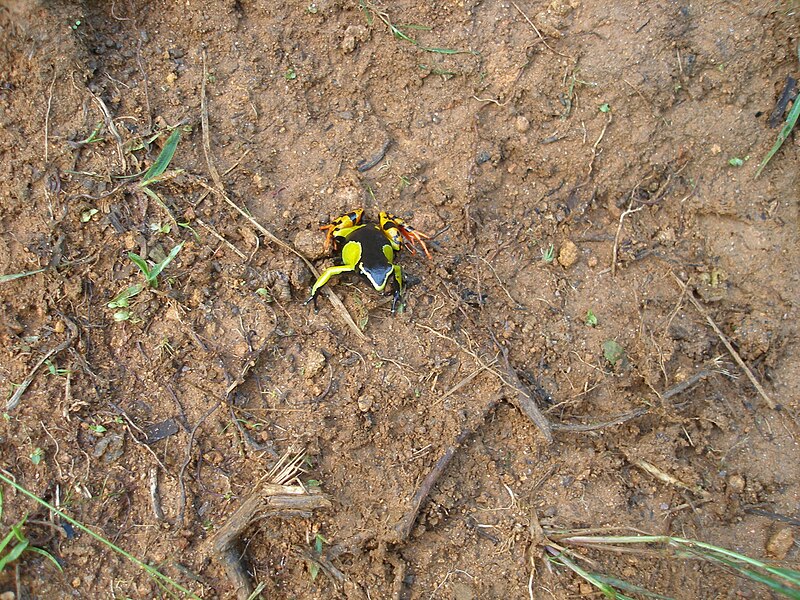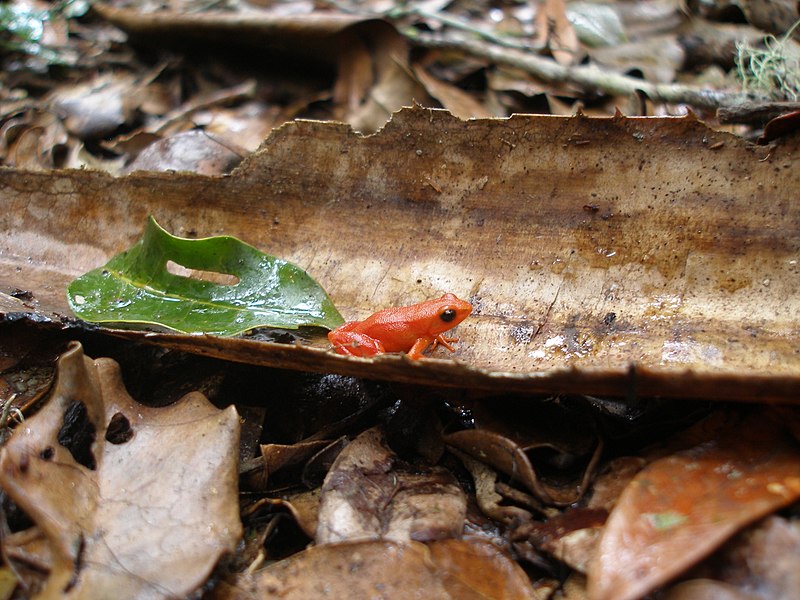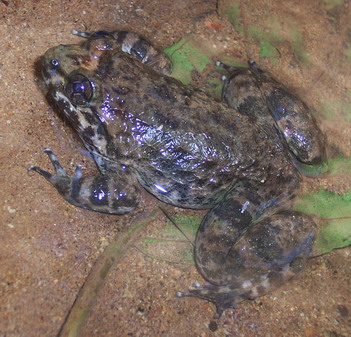The pine, bull and gopher snakes are a complex of 15 species that range from southern Canada through the United States and Mexico to Guatemala. Large (to 8 feet), powerful constrictors, most species are well-studied and long-established in captivity. The Black Pine Snake (Pituophis melanoleucus lodingi) remains, however, elusive in the wild and less well-represented in captivity.
I first worked with this striking snake at the Staten Island Zoo, home to one of the country’s most impressive snake collections, and have longed to observe it in the wild ever since.
Classification and Description
The Black Pine Snake is a melanistic form of the northern pine snake (P. m. melanoleucus) that has been given subspecies status. One other subspecies, the Florida Pine Snake (P. m. mugitus), has been described. The Louisiana Pine Snake (pictured here) is now classified as a distinct species, P. ruthveni.
Uniformly black (rarely dark brown) above and below, the Black Pine is stoutly built. They average 5 feet in length, with a record of 6 ½ feet.
Range and Habitat
This rare snake is limited to a few localized sites in extreme eastern Louisiana, southwestern Alabama and, possibly, Mississippi.
It is found only in association with the sandy soils of Longleaf Pine communities, a threatened habitat. The Black Pine Snake spends most of its life underground, within pocket gopher burrows or the root systems of rotting pines.
Status
This snake has an extremely limited range and is protected by the states in which it occurs. In the past, habitat development and collection for the pet trade threatened its survival. Captive populations are well-established in both zoos and the private sector.
Reproduction
Mating occurs in the spring, and 3-24 eggs are laid in June-August. The clutch is hidden in a burrow or, less frequently, below a rock or log. The young hatch in 64-79 days at 12-18 inches in length.
Diet
The natural diet has not been thoroughly documented, but likely includes deer mice, ground squirrels, chipmunks, cotton rats, rabbits, pocket gophers and ground-nesting birds and their eggs. Prey is killed by constriction.
This and related species usually hunt below ground, within the burrows of gophers and other rodents. Where space does not permit constriction, these powerful snakes kill rodents by forcibly pressing them against the burrow walls. Often a number of animals will be killed in this manner before the snake stops to feed.
Pine snakes are much valued for their rodent-catching abilities and are sometimes released around farms and grain storage facilities.
Defense
When threatened, pine snakes put on an impressive display – the body swells with inhaled air that is expelled in a loud hiss, while the tail vibrates rapidly and the head is flattened. The snake rears up in a series of ‘S” shaped curves and strikes repeatedly. Most will flee if given the opportunity, but they do not hesitate to bite.
Husbandry
Black Pine Snake care is fairly straightforward, and follows that of rat snakes and other Colubrids. Please write in for further information, or see Black Rat Snake Care and Natural History for husbandry guidelines.
Captive born specimens are usually calm, although the few I have worked with were a bit high strung. Being largely fossorial in the wild, they are ill at ease if forced to remain in the open. Even long term captives spend a good deal of their time within shelters.
Further Reading
You can read about conservation efforts for Black Pine Snakes in Alabama here.


 That Reptile Blog – Reptile, Amphibian and Exotic Pet Care and Information
That Reptile Blog – Reptile, Amphibian and Exotic Pet Care and Information

 The Tropical Girdled Lizard (Cordylus tropidosternum) is the most readily available of the 30+ Cordylus species, and offers an excellent introduction to the group. It is sometimes sold as the “Armadillo Lizard”, confusing purchasers who had in mind another (and, at $1,200+ each, vastly more expensive!) species with the same common name, C. cataphractus. It also occasionally appears under the name “East African Spiny-tailed Lizard”.
The Tropical Girdled Lizard (Cordylus tropidosternum) is the most readily available of the 30+ Cordylus species, and offers an excellent introduction to the group. It is sometimes sold as the “Armadillo Lizard”, confusing purchasers who had in mind another (and, at $1,200+ each, vastly more expensive!) species with the same common name, C. cataphractus. It also occasionally appears under the name “East African Spiny-tailed Lizard”. The newly discovered frog is largely aquatic, and apparently catches birds that come to the water’s edge to drink – quite a unique feeding strategy for a frog (I once saw a surprising film of African Side-necked Turtles catching doves in this manner).
The newly discovered frog is largely aquatic, and apparently catches birds that come to the water’s edge to drink – quite a unique feeding strategy for a frog (I once saw a surprising film of African Side-necked Turtles catching doves in this manner).